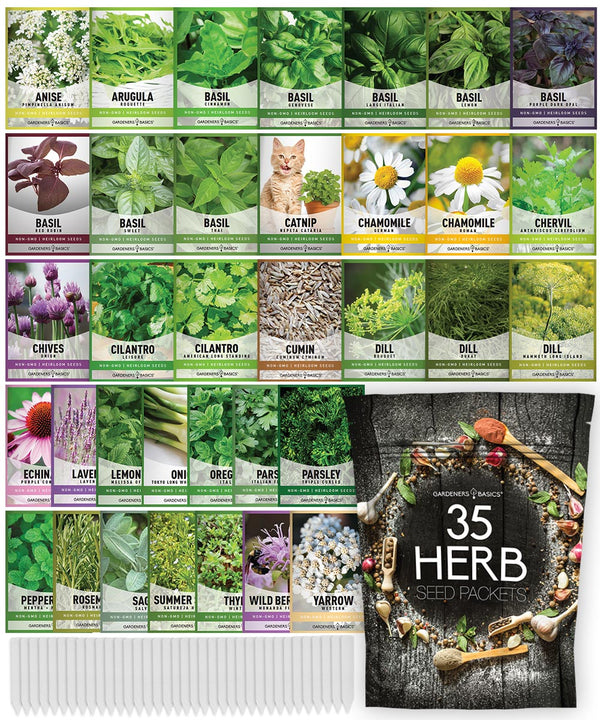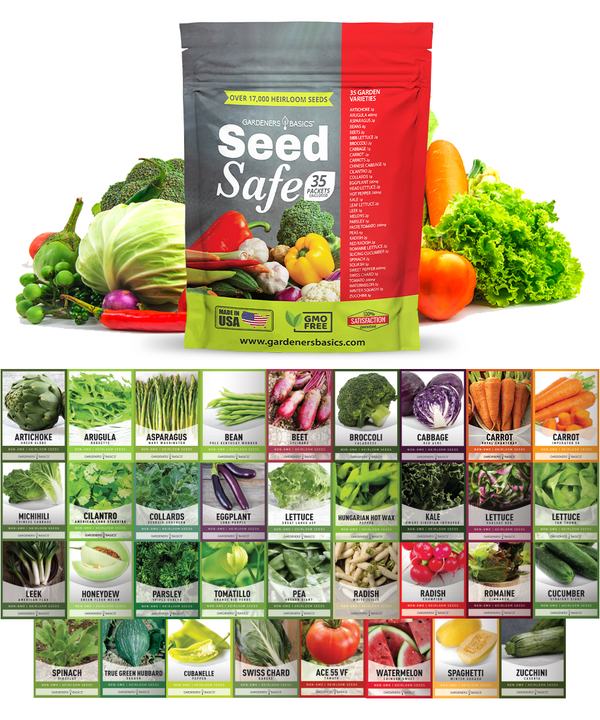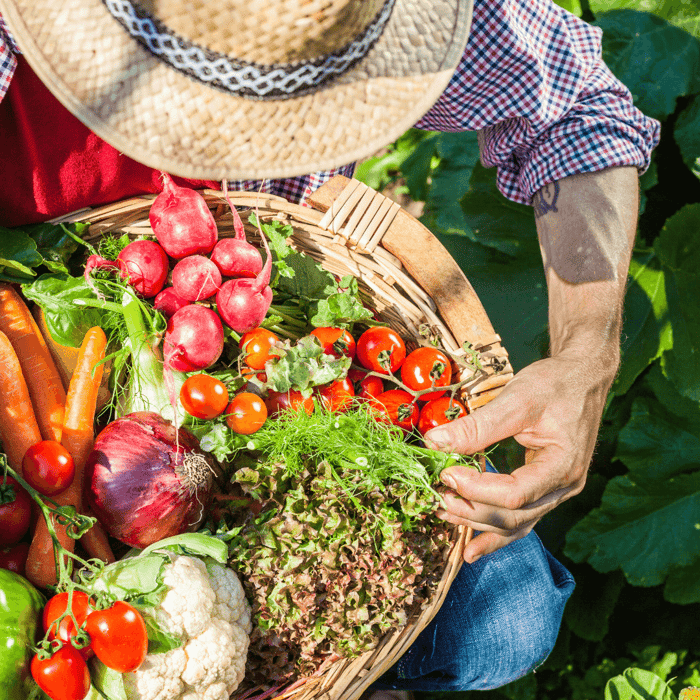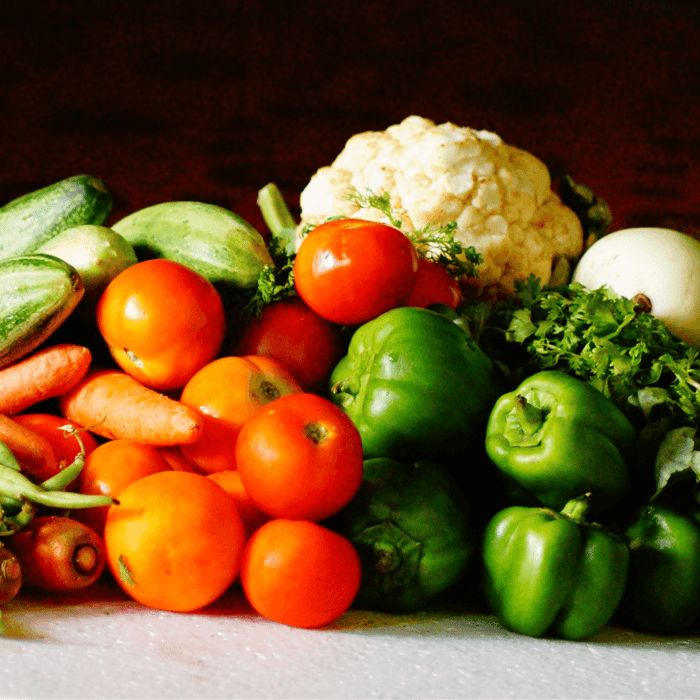Growing your own food is a rewarding and sustainable way to feed yourself and your family. With careful planning and some innovative techniques, it's possible to enjoy a steady succession of harvests all year round, even in colder climates. In this article, we'll cover some tips and strategies on how to grow your own food year round, from sowing quick-maturing seeds to using hydroponics and aquaponics systems.
Benefits of Growing Your Own Food:
- Access to fresh, healthy produce.
- Reduced reliance on grocery stores.
- Cost savings.
- Environmental benefits.
- Satisfaction of growing your own food.
Start with Heirloom Seeds
Vegetable Seed Vault Kit | 35 Variety Pack

$29.95
$49.95
Ultimate Survival Seed Vault: 16,000+ Non-GMO Heirloom Vegetable Seeds for Emergency Preparedness Introducing the Seed Vault Kit, your all-in-one solution for emergency preparedness and sustainable gardening. This premium seed kit contains over 16,000 non-GMO, Heirloom, Non-Hybrid, and Open Pollinated seeds,… read more
To grow a productive garden, it's essential to start with high-quality seeds. Heirloom seeds are a great choice, as they are open-pollinated and can be saved from year to year. They also tend to be more adaptable to local growing conditions and often have better flavor than hybrid varieties.
Use Quick-Maturing Seeds for a Steady Succession of Harvests
Sowing quick-maturing seeds is a great way to ensure a steady supply of fresh produce throughout the growing season. Instead of planting all your seeds at once, stagger your sowings so that you have a continual supply of crops to harvest. This is especially important for vegetables like leafy greens and bush beans, which can be harvested multiple times throughout the season.
Examples of Quick-Maturing Vegetables:
- Leafy greens (lettuce, spinach, kale, arugula).
- Radishes.
- Bush beans.
- Peas.
- Cucumbers.
- Summer squash.
- Herbs (basil, cilantro, parsley).
Try Hydroponics and Aquaponics for Indoor Growing
Hydroponics and aquaponics systems allow you to grow crops indoors year-round, regardless of the weather outside. Hydroponic systems use a nutrient-rich water solution instead of soil, while aquaponic systems combine hydroponics with aquaculture, using fish to fertilize the water. Both systems can be used to grow a wide variety of crops, from leafy greens to tomatoes and strawberries.
Hydroponics vs. Aquaponics:
- Hydroponics uses a nutrient-rich water solution instead of soil.
- Aquaponics combines hydroponics with aquaculture, using fish to fertilize the water.
- Both systems can be used to grow a wide variety of crops.
- Hydroponics may require more monitoring and maintenance.
- Aquaponics can provide a sustainable source of protein (fish) in addition to vegetables.
Use Cold Frames to Extend the Growing Season
Cold frames are simple structures that can be used to extend the growing season by protecting plants from the cold. They are essentially mini-greenhouses that can be used to start plants early in the spring or to grow crops into the fall and winter months. Cold frames can be made from a variety of materials, including wood, PVC piping, or even old windows.
Popular Herb Seeds for Planting | 35 Variety Pack

$29.95
$49.95
Heirloom, non-GMO herb seeds for indoor and outdoor home gardens! Introducing our 35 Herb Seeds Variety Pack, the ultimate selection for any herb garden enthusiast! This premium assortment includes heirloom herb seeds that are non-hybrid, open-pollinated, and non-GMO, ensuring you get only… read more
Tips for Using Cold Frames:
- Choose a sunny location.
- Use insulated materials (such as straw or hay) to protect plants from cold temperatures.
- Ventilate the cold frame on warm days to prevent overheating.
- Start plants early in the spring by using a cold frame to warm the soil.
- Use a cold frame to extend the growing season for crops like lettuce and spinach.
Consider Grow Lights for Indoor Growing
Grow lights are essential for indoor growing, as they provide the light that plants need to grow and thrive. LED grow lights are a popular choice, as they are energy-efficient and provide a spectrum of light that is ideal for plant growth. When using grow lights, it's important to choose the right intensity and duration of light for each stage of plant growth.
Strategies for Year-Round Harvests:
- Start with heirloom seeds.
- Use quick-maturing seeds for a steady succession of harvests.
- Try hydroponics and aquaponics for indoor growing.
- Use cold frames to extend the growing season.
- Consider growing lights for indoor growing.
- Plan for succession crops to ensure continual harvests.
- Grow carrots and parsnips for late-season harvests.
- Make careful plans to maximize your productive garden.
Plan for Succession Crops to Ensure Continual Harvests
Succession planting is the practice of planting crops in succession, so that as one crop finishes, another is ready to take its place. This ensures a continual harvest throughout the growing season, as well as maximizing the use of space in your garden. To plan for succession crops, consider the early, mid, and late-season harvesting times for each vegetable in your garden.
Benefits of Succession Planting:
- Maximizes the use of space in your garden.
- Ensures a continual harvest throughout the growing season.
- Reduces waste by planting only what you need.
- Provides variety in your garden.
- Helps to prevent pests and diseases by rotating crops.
Grow Carrots and Parsnips for Late-Season Harvests
Carrots and parsnips are great vegetables to grow for late-season harvests. These root vegetables can be left in the ground until late fall or even early winter, as they continue to ripen and sweeten over time. They also store well and can be enjoyed throughout the winter months.
Examples of Late-Season Vegetables:
- Carrots.
- Parsnips.
- Brussels sprouts.
- Kale.
- Cabbage.
- Broccoli.
- Cauliflower.
Seed Safe Survival Seed Kit - 35 Variety Pack

$29.95
$49.95
Seed Safe Survival Seed Kit: The Ultimate Heirloom Collection for Self-Sufficient Gardening Introducing the Seed Safe - 35 Varieties of Heirloom Vegetable, Herb, and Fruit Seeds, the ultimate solution for gardeners who want to secure a bountiful future harvest. This… read more
Make Careful Plans to Maximize Your Productive Garden
Growing your own food year-round takes careful planning and preparation. Start by selecting the right crops for your climate and growing conditions, and make sure to choose high-quality seeds. Plan for succession crops and use techniques like hydroponics and aquaponics to extend the growing season. With a little bit of effort, you can enjoy fresh, homegrown produce all year round.
In conclusion, growing your own food year-round is a great way to ensure a steady supply of fresh, healthy produce and reduce your reliance on grocery stores. By using innovative techniques like hydroponics, aquaponics, and cold frames, you can extend the growing season and grow a wider variety of crops. Additionally, careful planning and succession planting can ensure that you have a continual supply of fresh vegetables throughout the growing season. With these tips and strategies, you can enjoy the many benefits of growing your own food year-round, no matter where you live.
By incorporating these strategies and tips into your gardening practice, you can enjoy a bountiful harvest of fresh, healthy produce year-round.
Frequently Asked Questions
1. Can you really grow food year-round?
Yes, with careful planning and the use of innovative techniques, it is possible to grow food year-round, even in colder climates. Strategies like using quick-maturing seeds, hydroponics and aquaponics, and cold frames can extend the growing season and provide a steady succession of harvests.
2. What are some good crops to grow for year-round harvests?
Leafy greens like lettuce, spinach, and kale, as well as quick-maturing vegetables like radishes, bush beans, and peas, are good crops to grow for year-round harvests. Carrots and parsnips are also great for late-season harvests.
3. What are some tips for indoor growing?
When growing indoors, it's important to provide adequate light, either from a south-facing window or grow lights. Make sure to monitor humidity and temperature levels, and choose crops that are well-suited for indoor growing, like herbs and leafy greens.
4. How do you plan for succession planting?
To plan for succession planting, consider the early, mid, and late-season harvesting times for each vegetable in your garden. Stagger your sowings so that you have a continual supply of crops to harvest, and make sure to choose varieties that are well-suited for your climate and growing conditions.
5. What are some common challenges to growing food year-round?
Some common challenges to growing food year-round include pests and diseases, lack of sunlight in the winter months, and fluctuating temperature and humidity levels. To address these challenges, consider using organic pest control methods, supplemental lighting, and environmental control systems like heaters and humidifiers.
6. How can I maximize the productivity of my vegetable garden?
To maximize the productivity of your vegetable garden, make sure to choose high-quality seeds, plan for succession planting, and use innovative techniques like hydroponics and aquaponics. Consider companion planting to maximize space and improve soil health, and use organic fertilizers and pest control methods to promote healthy growth.
7. What are some environmental benefits of growing your own food?
Growing your own food can have a number of environmental benefits. It reduces the number of fossil fuels needed to transport food from farm to table, reduces packaging waste, and promotes biodiversity by providing a habitat for beneficial insects and wildlife.
8. How much space do I need to grow food year-round?
The amount of space you need to grow food year-round depends on a number of factors, including the crops you choose to grow and the techniques you use. Hydroponics and aquaponics systems can be used to grow a lot of food in a small space, while cold frames and other season-extension techniques can allow you to grow crops in a limited amount of space.
9. Can I grow food year-round in a colder climate?
Yes, with the use of season-extension techniques like cold frames and row covers, as well as the use of cold-tolerant crops, it is possible to grow food year-round in a colder climate. You may also need to use supplemental lighting and environmental control systems like heaters and humidifiers to ensure optimal growing conditions.
10. What are some tips for starting a vegetable garden?
To start a vegetable garden, choose a sunny location with well-drained soil. Make sure to choose crops that are well-suited for your climate and growing conditions, and consider using raised beds or container gardens if you have limited space. Plan for succession planting and use organic fertilizers and pest control methods to promote healthy growth. Finally, don't be afraid to experiment and try new crops and techniques to see what works best for you.







